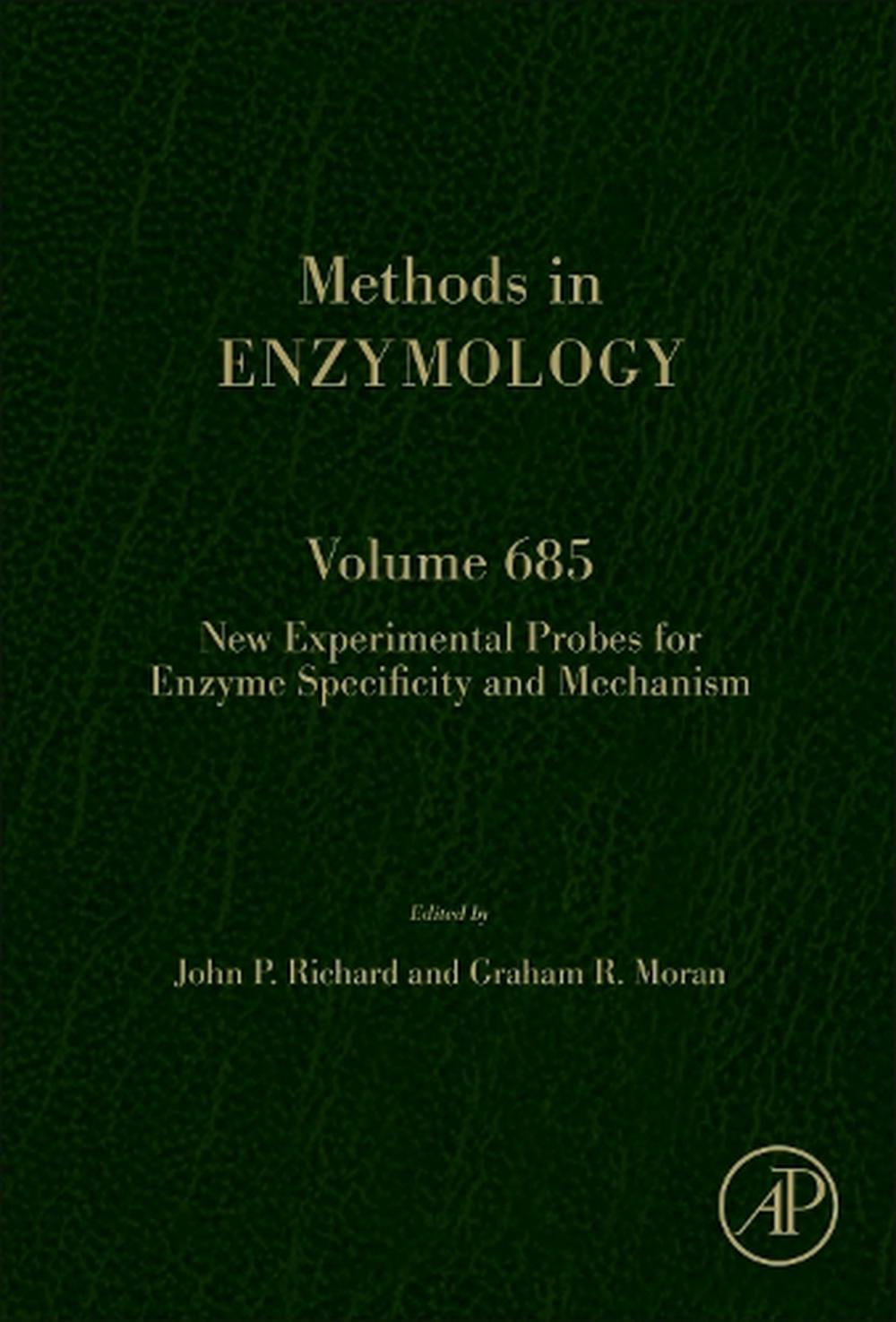
New Experimental Probes for Enzyme Specificity and Mechanism
$522.50
- Hardcover
570 pages
- Release Date
25 May 2023
Summary
Unlocking Enzyme Secrets: Novel Probes for Specificity and Mechanism
New Experimental Probes for Enzyme Specificity and Mechanism, Volume 685, the latest release in the Methods of Enzymology series, highlights new advances in the field. This new volume presents interesting chapters on a variety of topics including:
- Subverting Hedgehog Protein Autoprocessing by Chemical Induction of Paracatalysis
- New Mechanistic Probes to Identify Novel Substrates for N-Myristo…
Book Details
| ISBN-13: | 9780443152764 |
|---|---|
| ISBN-10: | 0443152764 |
| Series: | Methods in Enzymology |
| Author: | Graham Moran, John P. Richard |
| Publisher: | Elsevier Science Publishing Co Inc |
| Imprint: | Academic Press Inc |
| Format: | Hardcover |
| Number of Pages: | 570 |
| Release Date: | 25 May 2023 |
| Weight: | 1.04kg |
| Dimensions: | 229mm x 152mm |
You Can Find This Book In
About The Author
Graham Moran
John Richard received his Ph.D. from Ohio State University, under the direction of Perry Frey. His thesis reported the synthesis of chiral oxygen-18 labelled phosphorothioate analogs of adenine nucleotides, and their use to determine the stereochemical course for enzyme-catalyzed phosphoryl transfer reactions. He worked as a postdoctoral fellow at Brandeis University with Bill Jencks, and developed an azide ion clock to measure the lifetimes of carbocation intermediates of solvolysis reactions. This clock was used to show that the mechanism for nucleophilic substitution reactions at ring-substituted 1 phenylethyl derivatives is controlled by the lifetimes of the carbocation intermediates of the solvolysis reaction. He began his independent career at the Department of Chemistry at the University of Kentucky in 1985 and moved to SUNY Buffalo in 1993.Richard is interested in understanding the mechanism for the reactions of small molecules in water, and for their catalysis by enzymes. His early independent studies focused on developing methods to determine rate and equilibrium constants for reactions of simple carbanions and carbocations intermediates of organic reactions in water. This led to a broad characterization of substituent effects on the stability of these intermediates, and a rationale for the observation that many polar electron-withdrawing substituents cause a decrease in both the stability and reactivity of resonance stabilized carbocations. Richard transitioned to studies on the mechanism for small molecule catalysis in models for enzyme-catalyzed reactions. These included proton transfer, hydride transfer, aldol condensation reactions, and phosphate diester hydrolysis. Most recently he has focused on determining the mechanism for the stabilization of reactive carbocation and carbanion enzymatic reaction intermediates through interactions with active-site protein side chains. An important outcome of this work is the determination that the most proficient enzyme catalysts of metabolic reactions utilize substrate binding interactions as glue in the construction of protein-substrate cages that provide a tremendous stabilization of carbanion and carbocation reaction intermediates. These results provide a simple rational for the existence of enzyme catalysts that follow Koshland’s induced-flt mechanism.
Professor Graham Moran began his doctoral at the University of New England Australia working under Dr. Barrie Entsch on the enzyme para-hydroxybenzoate hydroxylase. After completing two years of doctoral work, he came to the University of Michigan to work collaboratively with the research group of Dr. David Ballou. He then continued his studies as a postdoctoral researcher in the laboratory of Dr. Paul Fitzpatrick at Texas A&M University working on tryptophan hydroxylase. Dr. Moran then established his independent research program in the Department of Chemistry and Biochemistry at the University of Wisconsin-Milwaukee where his laboratory was based for 18 years. During this period his group studied numerous enzymes, including 4-hydryphenylpyruvate dioxygenase, hydroxymandelate synthase, kynurenine-3-monooxygenase and renalase. In 2018, Dr. Moran joined Loyola University Chicago Chemistry and Biochemistry Department, as the Carl Moore Research Chair. His group currently studies enzymes of riboflavin biosynthesis (RibA, RibB, RibD), dihydropyrimidine dehydrogenase, isocitrate dehydrogenase, and glutathione-thioredoxin reductase.The unifying theme of his career has been finding evidence for the chemical mechanisms of enzymes. Identifying the transient states that exist as an enzyme catalyzes reaction requires the use of rapid mixing spectrophotometric and quench methods in combination with a variety of tailored analysis protocols. While a number of the enzyme systems studied in the Moran research group have had direct applications in medicine and agriculture, the emphasis of the work has remained elucidation of the curious and intricate chemistry at work in each system.
Returns
This item is eligible for free returns within 30 days of delivery. See our returns policy for further details.




